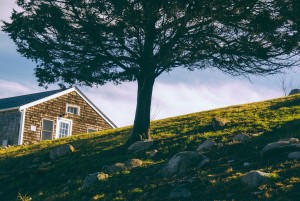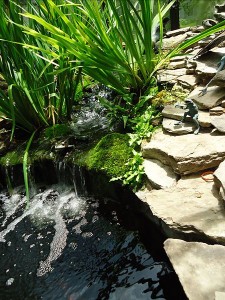Losing trees from your neighborhood could reduce the value of your house. Trees provide shade, add beauty, and also benefit us in many other ways. Can we really put a number on the value of a tree and say how much it is worth?
You may love your trees in your garden or on your street corner simply because they are beautiful to see. Trees are essential for supporting wildlife in a forest, and they also provide shade and food for us. Trees in the forest provide us a number of things, from food, to clean air, to shelter and medicine. But how much is a tree really worth in terms of dollars?
If you have trees in your neighborhood or backyard, you could have an appraisal done based on the lumber, how old it is, and the species of the tree, but the value of a tree goes beyond the lumber or the fruit it bears.
Trees keep you cool
People living in areas with hot summers spend a lot of money on air conditioning. However, trees play an important role by providing shade and keeping our environment cool, and therefore, trees are valuable commodities because trees keep us cool naturally during the hot summer.
You could easily estimate the amount of energy a tree saves for you by keeping you cool. When you save energy, you save fossil fuels and so you also save carbon dioxide emission from burning of fossil fuels. You could calculate the value of a tree by adding all the energy and carbon dioxide emission it saves in its lifetime.
Location of trees near your house changes the way it shades your house and saves you energy, and so, it’s critical to know where to plant a tree to benefit from it the most. A tree planted on the west side of your house would be the most valuable ones because they would provide longer shade in the afternoon when the air gets the hottest. So, those trees would keep you cool when you come home from work. You would need less energy from your air-conditioning to cool your home.
But trees planted in any location can cool your surroundings. They filter out carbon dioxide and provide us with fresh oxygen. In recent studies in Toronto, it was found about half the shade benefit of urban trees was received by houses not on the plot where the tree was actually growing. This means, a tree can cool an entire urban area, no matter which location it was growing.
Urban gardening is the key
Urban gardening would improve the landscape of your home, improve the environment and also improve the indoor and outdoor air quality. It would save you energy and money by saving you trips to the grocery store and keeping your home cool at the same time.
In urban areas, you should not worry too much about the perfect spot to place your trees, but you should pay attention to where your trees are most likely to thrive. When you and all your neighbors start gardening, this would benefit your whole neighborhood. When planting trees you should choose a spot from urban gardening perspective, meaning choose a spot that would benefit your plants the most.
Conclusion
Trees provide us food, shade, and save us energy in many ways, so, when calculating the value of a tree, calculate not only the amount of lumber, but also take energy savings, carbon dioxide emission greenhouse effects, and healthcare costs – all into consideration.
Please join us and help us spread the word. For more information please click here to book a meeting with us or leave a comment in the comment box below, or call us at 303-495-3705.
We would also appreciate your feedback so please put down your thoughts about this article on our Facebook page or in the comment box below.
Source: Environmental Professionals Network
Related articles and resources:
- 5 Natural Ways to Stay Cool This Summer | Environmental Professionals Network
- The Environmental Impacts of Using Paper | Environmental Professionals Network
- Rainforests: What’s so Cool About Them? | Environmental Professionals Network
- How much is a tree worth? – Telegraph
- How Much is That Tree Worth in Timber? > Forestech
- What Is a Tree Worth? – Forestry – forestry.usu.edu



